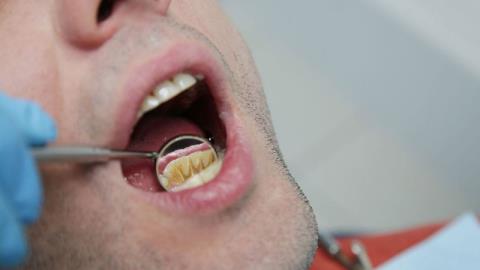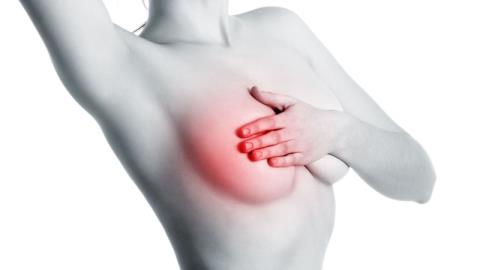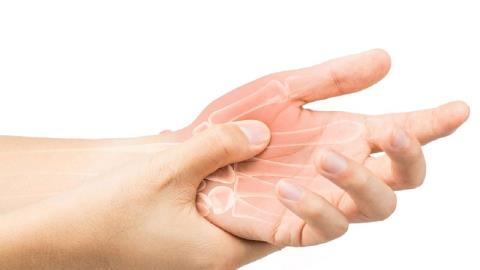Paget's disease of the breast is a rare disease that occurs in women and is rare in men. As an uncommon type of breast cancer, the disease is also very dangerous and should be detected early. The following article will provide you with information about the symptoms of the disease as well as treatment methods.
Paget is a cancer of the apocrine gland in the epidermis of the epithelium. In 1874, Paget's disease was first described and is divided into two main types, including: Paget mammary and extramammary Paget. These two forms differ only in the location of appearance, but the clinical manifestations are similar. Paget's disease is easily misdiagnosed with other skin conditions, so learn the symptoms below.
What is Paget's disease of the breast?
Paget's disease of the breast is an uncommon type of breast cancer , the earliest manifestation of which is usually changes in the nipple. Less than 5% of women have this type of breast cancer. Men can also get Paget's disease, but it's very rare.
Paget's disease of the breast is not the same as Paget's disease of the bone.
What are the symptoms of Paget's disease of the breast?
The most common symptom is a red, burning, scaly nipple that can spread to the areola. These nodules can be itchy or cause a burning sensation. The nipple may be inverted and there may be an abnormal discharge.
Paget's disease may look like other skin conditions such as eczema or psoriasis, but there are differences. For example, Paget's disease affects the nipples early in the disease while eczema affects only the areola area and rarely affects the nipples. In addition, Paget's disease usually affects only one breast while most other skin diseases tend to affect both breasts.
 The most common symptom is red nipples, which can be itchy or cause a burning sensation
The most common symptom is red nipples, which can be itchy or cause a burning sensation
Ductal carcinoma in situ (DCIS)
Most people with Paget's disease will have an early form of breast cancer (called ductal carcinoma in situ (DCIS) - somewhere in the breast.
DCIS is graded histologically low, medium, or high, based on how the cells look under the microscope. When Paget's disease is present, they are considered histologically high grade DCIS.
DCIS is understood as cancer cells that grow inside the lumen of the milk ducts, but are still completely in situ (at their place of origin). They have not yet grown outside of the milk ducts, or surrounding breast tissue, or spread to other parts of the body.
Due to its limitation in the milk ducts, if treated, DCIS has a good prognosis. However, if DCIS is left untreated, cancer cells have the potential to spread from the milk ducts into the surrounding breast tissue and become invasive breast cancer (see next section).
Although the grade, size, and histology of DCIS can help predict whether it will become invasive cancer, there is currently no way to know for sure if this will happen.
If you have DCIS, you may find it helpful to read the article Ductal ductal carcinoma in situ (DCIS).
Invasive breast cancer
Some people with Paget's disease will also develop invasive breast cancer. In many cases there will be a lump in the breast. Invasive breast cancer is breast cancer that has the ability to spread from the breast to other parts of the body. Even without a tumor, some people may still have invasive breast cancer.
 Paget's disease will also develop into invasive breast cancer
Paget's disease will also develop into invasive breast cancer
How is Paget's disease diagnosed?
Because Paget's disease is rare and can look like other skin conditions, it's often not immediately diagnosed. You may have several tests, including:
- Mammography (breast X-ray).
- Ultrasound (using high-frequency sound waves to create images).
Biopsy
You will usually then have a biopsy to confirm the diagnosis. A biopsy is the removal of a piece of tissue for examination under a microscope. The type of biopsy you need will depend on your symptoms. For example:
- Nipple scraping removes cells from the skin of the diseased nipple.
- A press biopsy removes a small piece of tissue from the skin of the breast or nipple.
- Core biopsies take a small sample of tissue from the area where the tumor is suspected.
If the suspected tumor site is visible only on radiographs or ultrasound, you may have an imaging-guided biopsy. This is where breast tissue samples are taken by mammogram or ultrasound to help locate the exact location of the suspected tumor.
These tests can be performed under local anesthesia. Samples of tissue or cells are sent to a laboratory to look at under a microscope to make a diagnosis.
How is Paget's disease treated?
Surgery
Surgery is the first line of treatment for Paget's disease of the breast. The type of surgery depends on the location of the tumor, the size of the tumor relative to the size of your breast, and whether more than one breast site is affected.
You may be offered breast-conserving surgery (mastectomy). This is a method of removing the cancerous tumor with a normal mastectomy around the cancer site. For Paget's disease of the breast, conservative surgery also includes removal of the nipple and areola.
A mastectomy (removal of all breast tissue along with the nipple area) is usually considered if:
- Cancer has affected a large area of the breast.
- It is not possible to obtain a clean cut of normal breast tissue around the area of breast cancer with breast-conserving surgery.
- There are two or more areas of breast cancer.
- Breast-conserving surgery does not provide cosmetic results due to the location or size of the tumor.
You may be offered a choice between mastectomy and breast-conserving surgery based on the size and location of the tumor relative to your breast. Your surgeon will discuss this with you and you can discuss your decision with the nurse caring for you.
Surgery is the first line of treatment for Paget's disease of the breast
Breast reconstruction surgery after Paget's disease of the breast
If you have a mastectomy, you are often asked about the option of breast reconstruction to create a new breast shape, either at the same time as your mastectomy (instant reconstruction) or many years later (reconstruction). delay).
Nipple reconstruction is possible after surgery for Paget's disease of the breast, whether you have a conservative surgery or a mastectomy.
The choice of breast reconstruction or not is a very personal decision. Some women feel the need for breast reconstruction to regain confidence. Many others prefer breast implants, some women choose not to have breast reconstruction and not have implants.
Lymph node surgery
If you have invasive breast cancer that originated in Paget's disease, your specialist will check to see if the lymph nodes under your arm (in the armpit fossa) contain cancer cells. This, along with other information about breast cancer, will help them decide which additional post-surgery treatments are beneficial for you. For testing, your doctor will recommend surgery to remove some lymph nodes (lymph node sampling or lymph node biopsy) or all lymph nodes (lymph node dissection).
sentinel lymph node biopsy
Sentinel lymph node biopsy is widely used if preoperative tests have not shown evidence that the lymph node contains cancer cells. A biopsy of the sentinel lymph node (the first lymph node to which cancer cells are most likely to spread) to determine if the sentinel lymph node has cancer cells. There may be more than 1 sentinel node. If there are no cancer cells, it usually means that the other lymph nodes are also free of cancer cells, so no further lymph node dissection is needed. A sentinel lymph node biopsy is usually done at the same time as cancer surgery but can be done before surgery.
If sentinel lymph node biopsy shows that the first lymph node has metastasized, you may recommend further surgery or radiation therapy to the remaining lymph nodes.
A sentinel lymph node biopsy is not appropriate if preoperative tests show that the lymph nodes contain cancer cells. In this case, the surgeon may recommend lymph node dissection.
Usually, lymph nodes under the arm do not need to be removed if you have ductal carcinoma in situ (DCIS). This is because undeveloped cancer cells have spread beyond the milk ducts into the surrounding breast tissue. However, lymph node surgery may be recommended for some people with ductal carcinoma in situ.
Adjuvant (additional) treatment
You may need other treatments after surgery, and these are called adjuvant therapies. May include:
- Valence
- Radiotherapy
- Endocrine therapy
- Targeted therapy
- Bisphosphonate drugs
The purpose of these treatments is to reduce the risk of breast cancer coming back in the same breast or in the opposite breast or spreading to another location in your body. Some of these treatments can be done before surgery and are called neoadjuvant therapy.
Valence
Whether or not chemotherapy is recommended depends heavily on the characteristics of the cancer such as histology, tumor size, and lymph node metastasis.
Chemotherapy may be used if the breast cancer is potentially invasive. Do not use chemotherapy to treat ductal carcinoma in situ (DCIS).
 Chemotherapy may be used if breast cancer is potentially invasive
Chemotherapy may be used if breast cancer is potentially invasive
Radiotherapy
Radiation therapy is the use of high-energy X-rays to kill cancer cells. If you have breast-conserving surgery, you will often receive radiation therapy to reduce the risk of breast cancer returning locally
Sometimes you may be considered for radiation therapy to the lymph nodes under your arm. Radiation therapy may also be given to the chest wall after a mastectomy in some cases. Example: If some lymph nodes under the arm have metastasized.
Endocrine therapy
The female hormone estrogen can promote certain types of breast cancer. There are many hormone therapies that work in different ways to block the effects of estrogen on cancer cells.
Endocrine therapy would only be indicated if breast cancer has receptors inside the cells that bind to estrogen and promote cancer growth. This is called estrogen receptor positive breast cancer or ER+ breast cancer. When estrogen binds to these receptors, it can promote cancer growth.
All invasive breast cancers are tested for estrogen receptors using tissue removed from a biopsy or after surgery. Ductal carcinoma in situ (DCIS) can be tested, but it is not done at all hospitals.
If you have hormone receptor-positive cancer, your specialist will discuss with you which hormone therapy they think would be best for you.
Tests will also be done to look for progesterone (another hormone) receptors. The benefit from endocrine therapy is less evident for breast cancers that are only progesterone receptor positive (PR+ and ER-). There are very few cases of breast cancer that fall into this category. However, if this is the case for you, your specialist will discuss with you whether endocrine therapy is right for you.
If your breast cancer is negative for hormone receptors, then hormone therapy will not give you any benefit.
Targeted therapy (biological)
This is a group of drugs that block the growth and development of cancer. They target and interfere with the processes in cells that make cancer grow.
The most widely used targeted therapy is trastuzumab. Only people whose invasive cancer is highly HER2-expressing (called Her2-positive) will benefit from treatment with trastuzumab. HER2 is a protein that causes cancer cells to grow.
There are many tests to measure HER2 expression that are performed on breast tissue removed during biopsy or surgery. If you have HER2-negative breast cancer, trastuzumab is unlikely to have any benefit.
Targeted therapy (biological)
Bisphospshonate drugs
Bisphosphonates are a group of drugs that may reduce the risk of diffuse invasive breast cancer in postmenopausal women. The drug can be used both for patients with natural menopause or menopause caused by breast cancer treatment. Bisphosphonates can also slow or prevent bone damage. The drug is often prescribed for people who have or are at risk of osteoporosis (when bones lose strength and are more likely to break). Bisphosphonates may be prescribed as tablets or as an intravenous infusion. Your specialist can tell you if bisphosphonates are right for you.
Paget's disease of the breast is often misdiagnosed with some other diseases, because the disease is dangerous, women should not be subjective with the signs of skin disease. Besides, regular breast cancer screening is a measure to help detect pathogens early.

 The most common symptom is red nipples, which can be itchy or cause a burning sensation
The most common symptom is red nipples, which can be itchy or cause a burning sensation Paget's disease will also develop into invasive breast cancer
Paget's disease will also develop into invasive breast cancer Chemotherapy may be used if breast cancer is potentially invasive
Chemotherapy may be used if breast cancer is potentially invasive





